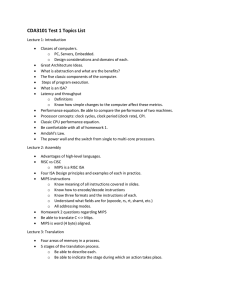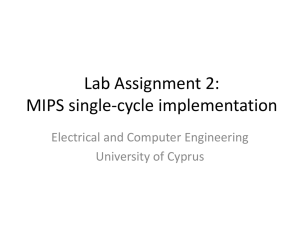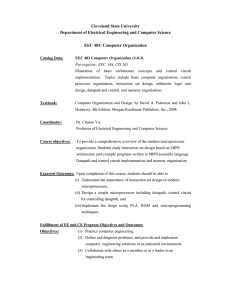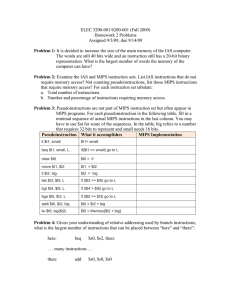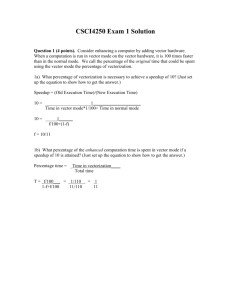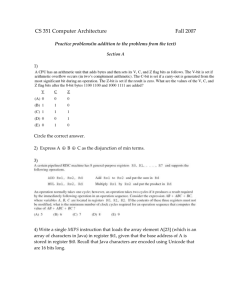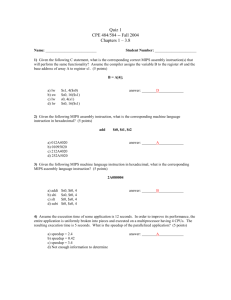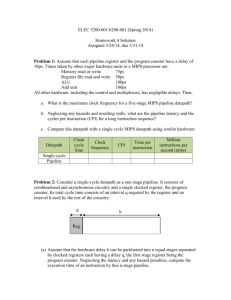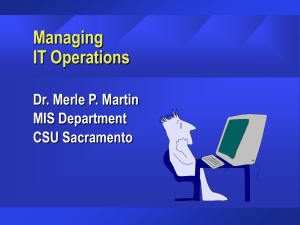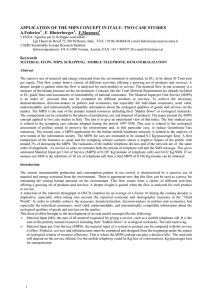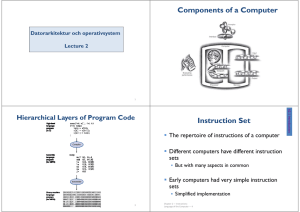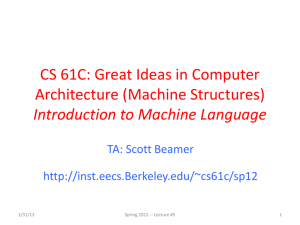CDA3101 Test 1 Topics List
advertisement
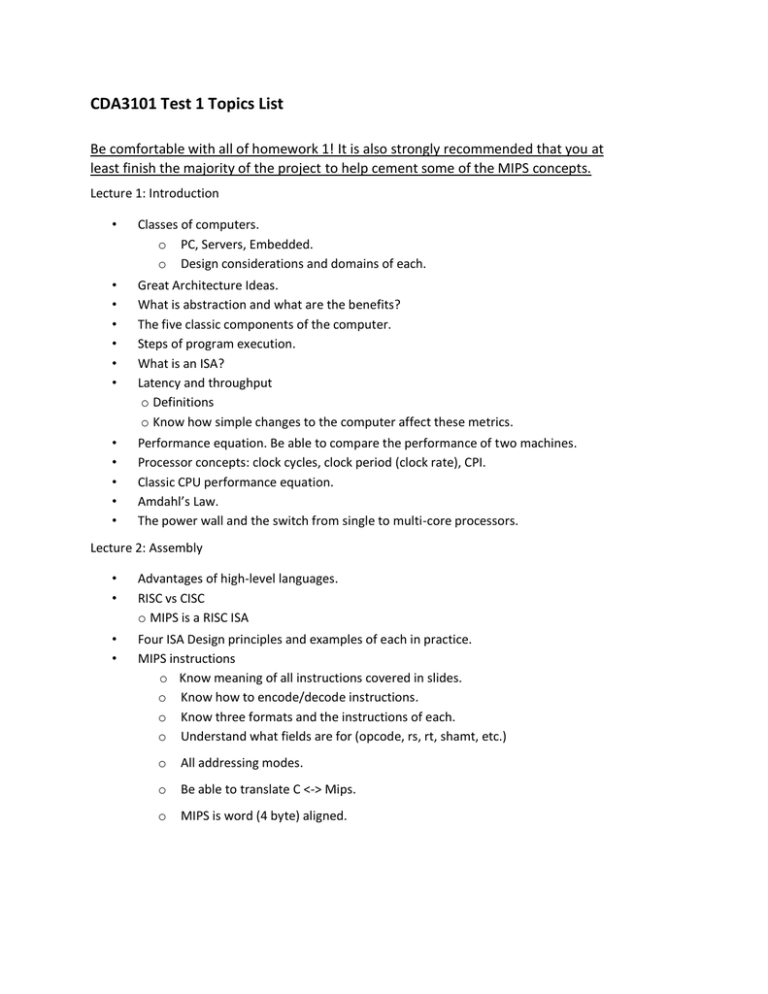
CDA3101 Test 1 Topics List Be comfortable with all of homework 1! It is also strongly recommended that you at least finish the majority of the project to help cement some of the MIPS concepts. Lecture 1: Introduction • Classes of computers. o PC, Servers, Embedded. o Design considerations and domains of each. • • • • • • Great Architecture Ideas. What is abstraction and what are the benefits? The five classic components of the computer. Steps of program execution. What is an ISA? Latency and throughput o Definitions o Know how simple changes to the computer affect these metrics. • • • • • Performance equation. Be able to compare the performance of two machines. Processor concepts: clock cycles, clock period (clock rate), CPI. Classic CPU performance equation. Amdahl’s Law. The power wall and the switch from single to multi-core processors. Lecture 2: Assembly • • Advantages of high-level languages. RISC vs CISC o MIPS is a RISC ISA • • Four ISA Design principles and examples of each in practice. MIPS instructions o Know meaning of all instructions covered in slides. o Know how to encode/decode instructions. o Know three formats and the instructions of each. o Understand what fields are for (opcode, rs, rt, shamt, etc.) o All addressing modes. o Be able to translate C <-> Mips. o MIPS is word (4 byte) aligned. Lecture 3: Translation • • Four areas of memory in a process. 5 stages of the translation process. o Be able to describe each. o Be able to indicate the stage during which an action takes place. Lecture 4: Logic Design • • • • Truth tables. Boolean algebra with AND, OR, and NOT. You do not need to memorize identities and laws. Be able to derive a logic equation. o From text (slide 10). o From truth table. o From hardware diagram. • • • • • • • Know AND, OR, NOT logic gate diagrams. Understand how multiplexors work. What is two-level logic and why is it desirable? Be able to write a logic equation in canonical form from a truth table. Programmable logic arrays – what they are and how they work. ALU – what its role is in the processor and inputs/outputs associated with it. Physical realization of a clock. Lecture 5: Single-Cycle Datapath and Control • • Roles of datapath and control. Understand the role of the state elements and the input/output associated with them. o Instruction Memory o PC o PC adder o ALU o Register file. o Data memory element o • • • Sign-extending element Understand the datapath for each of the simple MIPS instructions we went over in class. Effect of asserting and deasserting control lines covered in class. Advantages and disadvantages of single-cycle approach.
